It gave us a form, a way to express ourselves,” says Godavari Devi, remembering a time gone by.
I am sitting in the modest living room of her home in the small, quiet hamlet of Ranti, near Madhubani town, while she regales us with tales from her travels as a National Award-winning Madhubani artist. Behind her, an entire wall is covered by one of her works—one of the largest paintings we have ever seen. She laughs when we marvel at its size. “This is nothing. You should see the ones I made for the Mithila Museum in Japan, many of them were almost 10 feet long.”
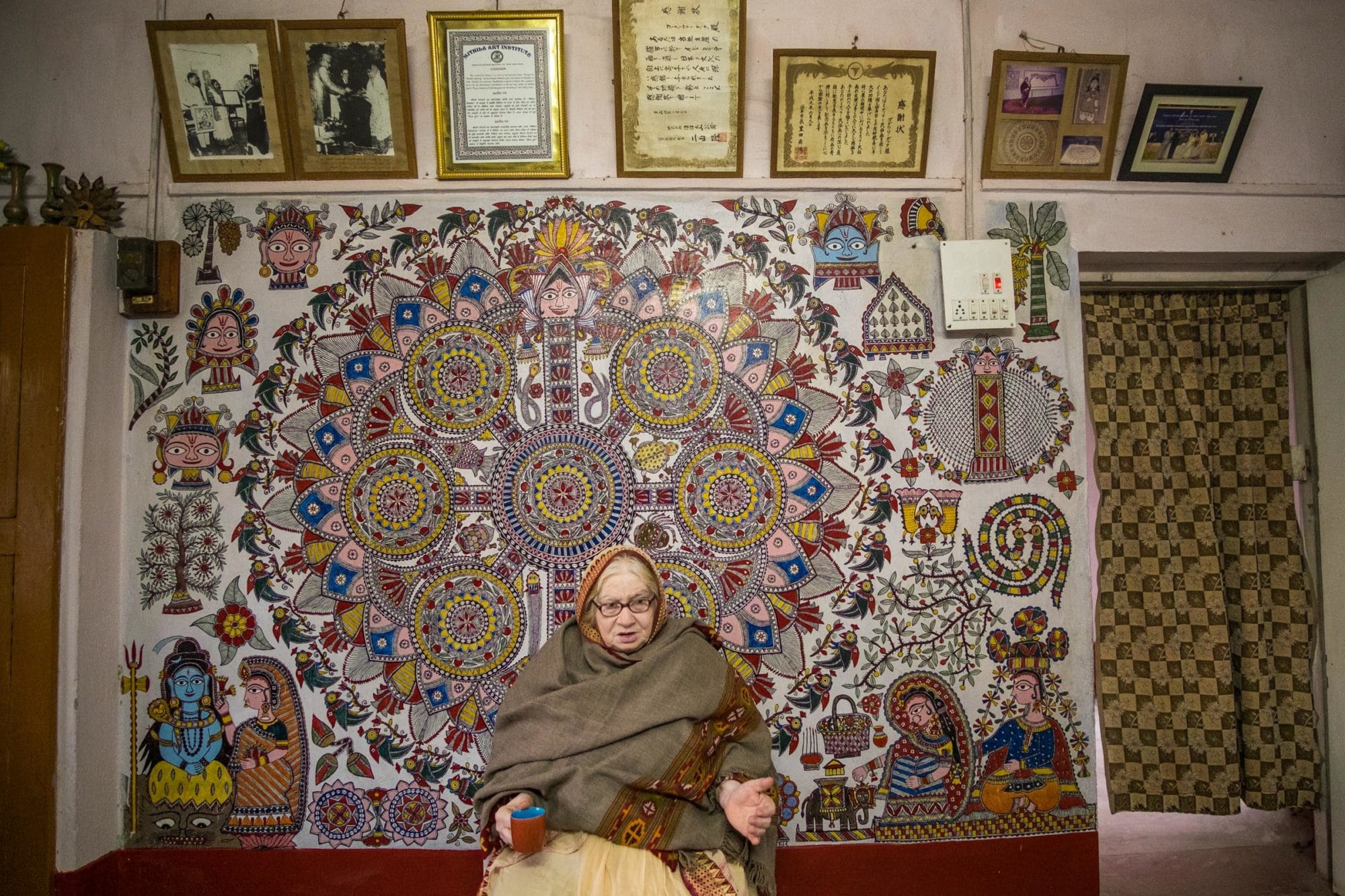
The only other large Madhubani I have seen before was on the wall of the Bihar Museum in Patna. My exposure to the style has only been through paintings in museums and homes. Now, I furiously scribble as I listen first-hand to this artist talk about her extraordinary life, which saw her travel from a small village in Bihar to Germany, the U.S., and Japan. The octogenarian belongs to a generation of pioneer women who brought attention to this unique art form in the 1960s, showcasing their talent and heritage around the world.
Although traditionally painted on the walls of homes to mark festivals and other important occasions, Madhubani art has since moved to paper, cloth, and other surfaces. The style originated in northern Bihar, specifically in the Mithila region, known as the birthplace of Sita; and drew inspiration from the Ramayana, nature, and folklore.
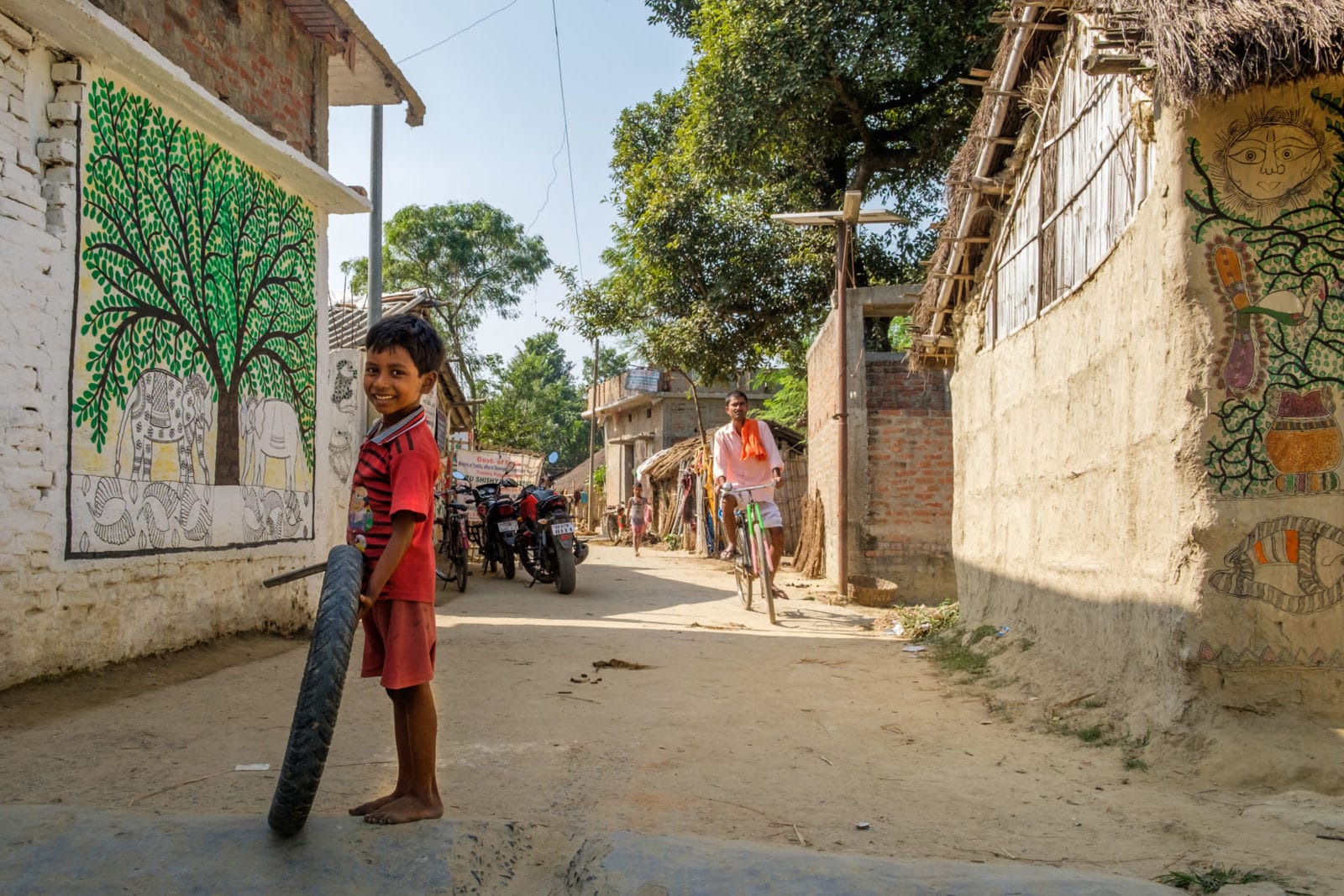
Ranti’s clean, narrow lanes are hemmed by tall palm trees and large homes, most of which are decorated with typically Madhubani images of village life, religious figures, and wedding celebrations. Almost every home has an artist in residence, and the colourful art on the walls gives the hamlet a museum-like atmosphere.
The history of the style likely dates back to the early 1800s, and Ranti, like many other villages in the region, has seen generations of women bring alive their villages through their art—often passed on from mothers to their daughters—many, using it to express their hopes and dreams in an otherwise conservative land.
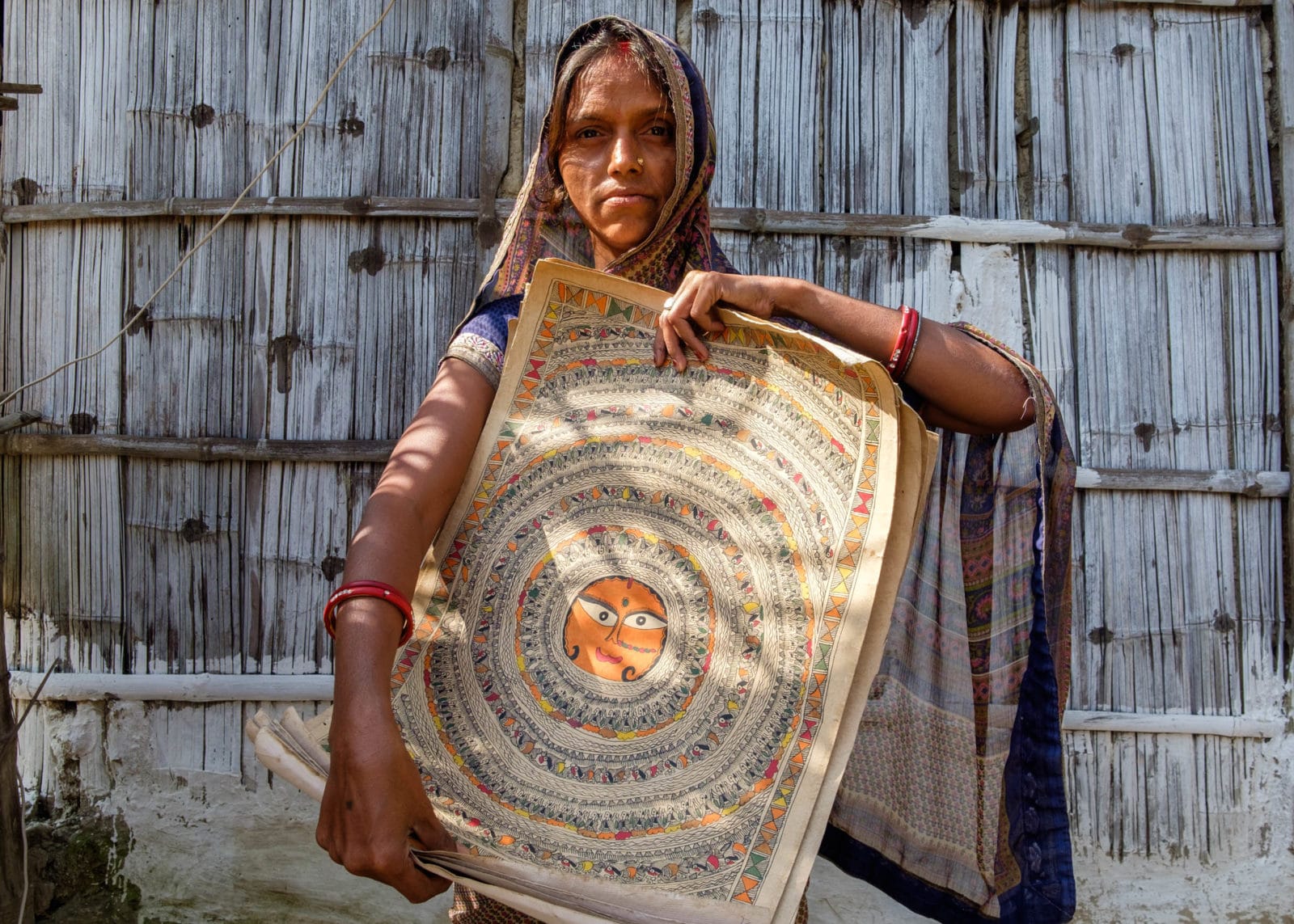
The precision and deftness of Madhubani art is fully realised only when a painting is seen as a whole. Upon closer inspection, however, you discover a lattice of fine black strokes that come together to create every masterpiece. The distinct, black double lines, which cover every inch of the canvas, were traditionally drawn freehand, using a bamboo stick wrapped in cotton. “Nature inspired us; even the colours we used came from nature,” says Dulari Devi, another award-winning artist from Ranti, whose home I visit next. Black, the predominant colour, came from mixing soot with cow dung; yellow from mixing turmeric or lime with the milk of the banyan leaves that are strewn across the region; blue came from indigo; white from rice powder; and red from the famous kusum flower. Today however, one can see Camel paintboxes and an array of brushes in the hands of younger artists, though many of the older ones still use the bamboo sticks. “The brush doesn’t quite allow for all the tiny lines that make up an expression or an elaborate wedding dress,” declares Godavari, echoing a sentiment I’ve found amongst other traditional artists across the country.
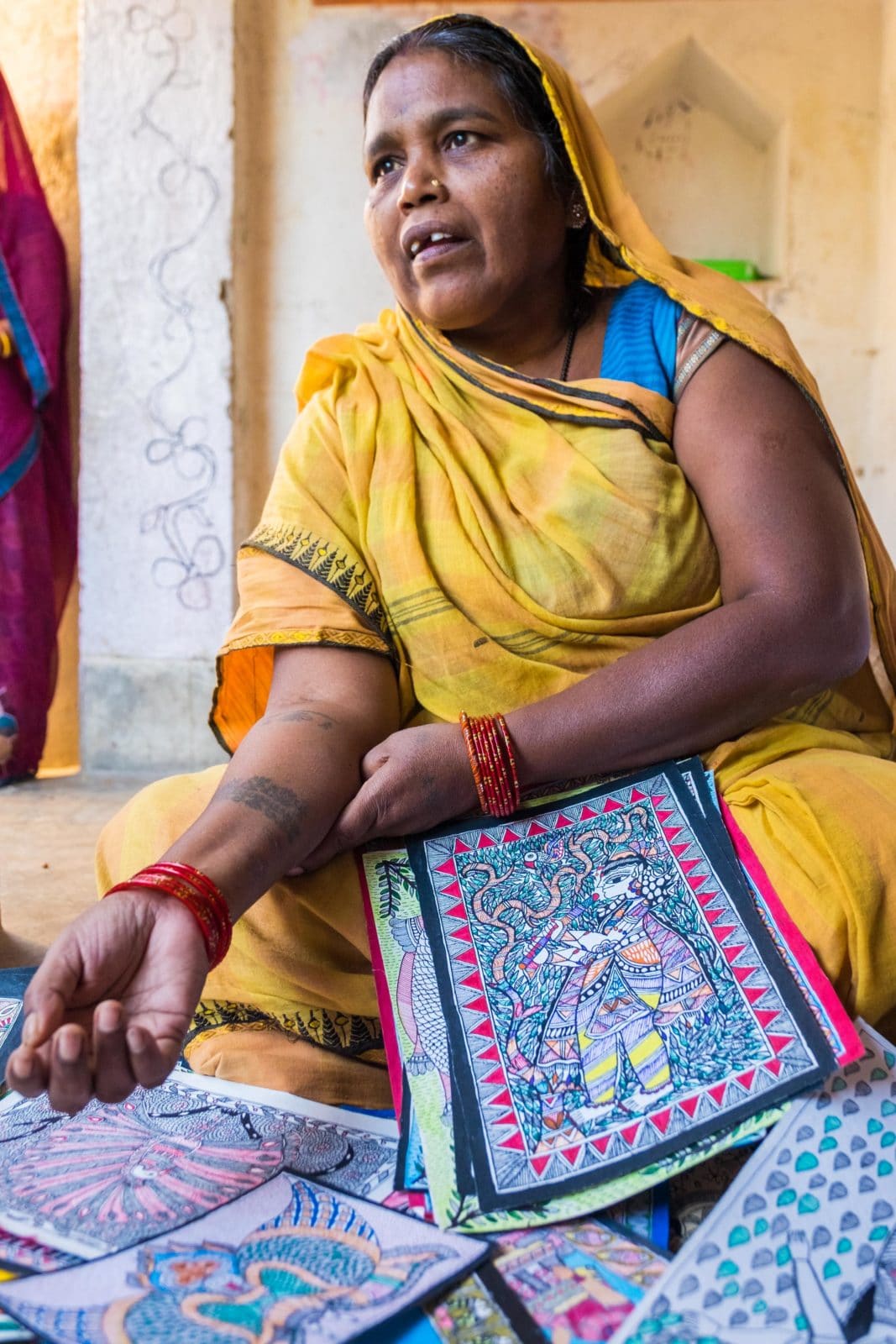
Madhubani art is now seen as a legitimate means of livelihood, and in Jitwarpur, a new generation of women and men is being trained in workshops run by the Ministry of Textiles. Many hope to get into the Mithila Art Institute, established in 2003 in Madhubani town with the help of the Ethnic Arts Foundation of California. The institute selects 30 students, through an annual competition, for a two-year programme taught by world-renowned artists. Dulari Devi, who went from farm labourer to celebrated painter and exhibitor, is a strong advocate of this programme that encourages artists.
Dulari’s life has been captured in a book, Following My Paint Brush, and she now teaches at the institute. She proudly shows us some of her students’ works. The pieces are stunning, raw and evocative, many exploring new themes, including the perils of climate change, unchecked development, dowry, and other social ills.
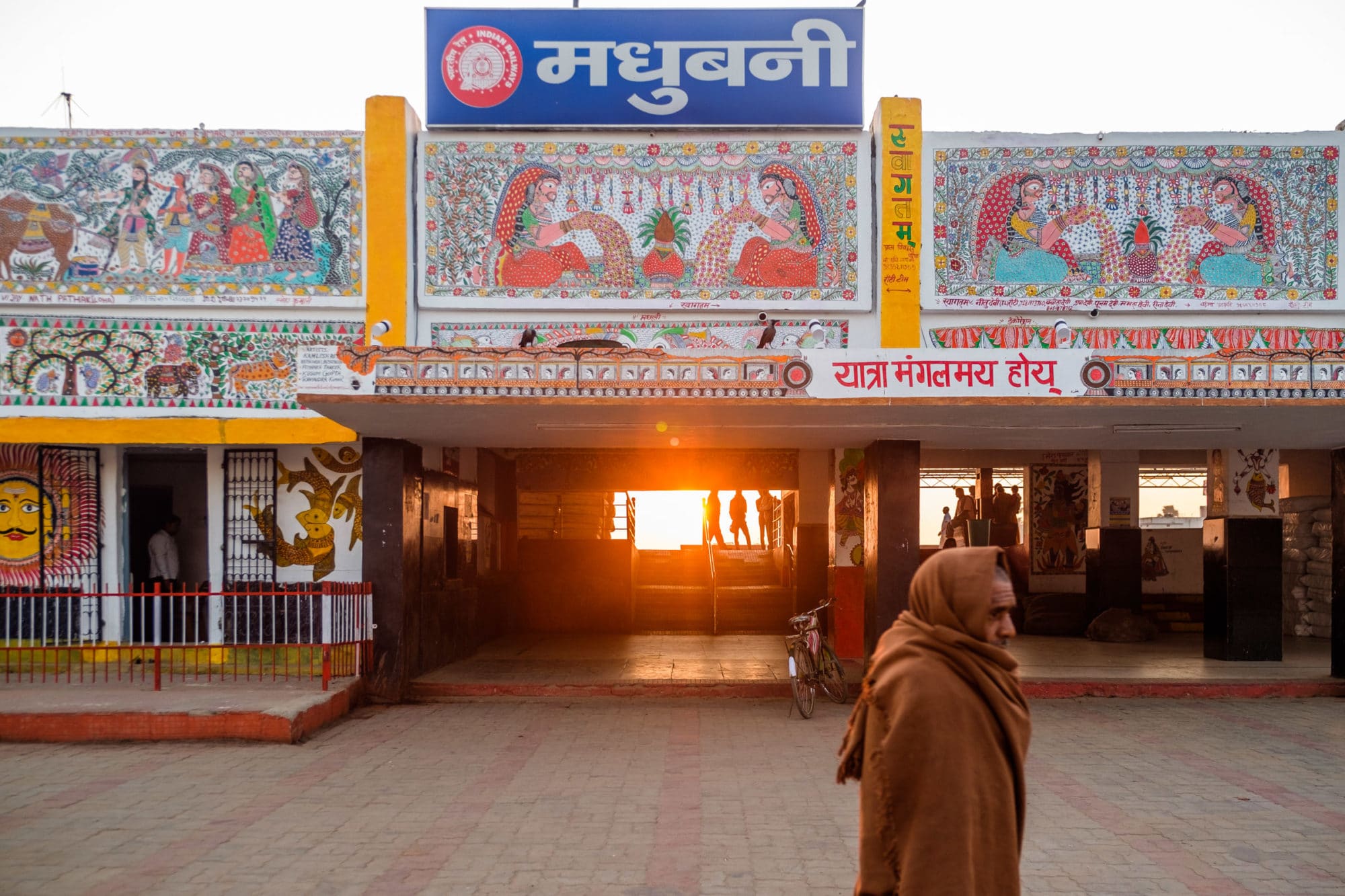
Walking through Ranti, Jitwarpur, and other villages, and talking to the artists, I realise that Madhubani is not merely a homogenous local craft or village tradition—there are distinctive sub-styles and traditions, many of which can be traced back to the caste system. Partly as a result of their access to raw materials and sacred texts, the Brahmins traditionally used more colour and religious motifs; meanwhile, the Kayastha style tended to focus on representations of fertility and celebration; and the lower castes, banned from using religious motifs, found inspiration in nature—a style known as godhana or tattoo, predominantly seen in Jitwarpur. Today, however, it is all changing and the boundaries are less rigid. At the government workshop I learn that godhana, once used only as tattoos on women, is now seen on canvas as well, and the forest has become an overarching background in almost every painting, crossing village and caste lines. “That’s what Madhubani is,” pipes a young girl in the workshop, as she effortlessly brings life to the empty canvas, “a forest of honey.”
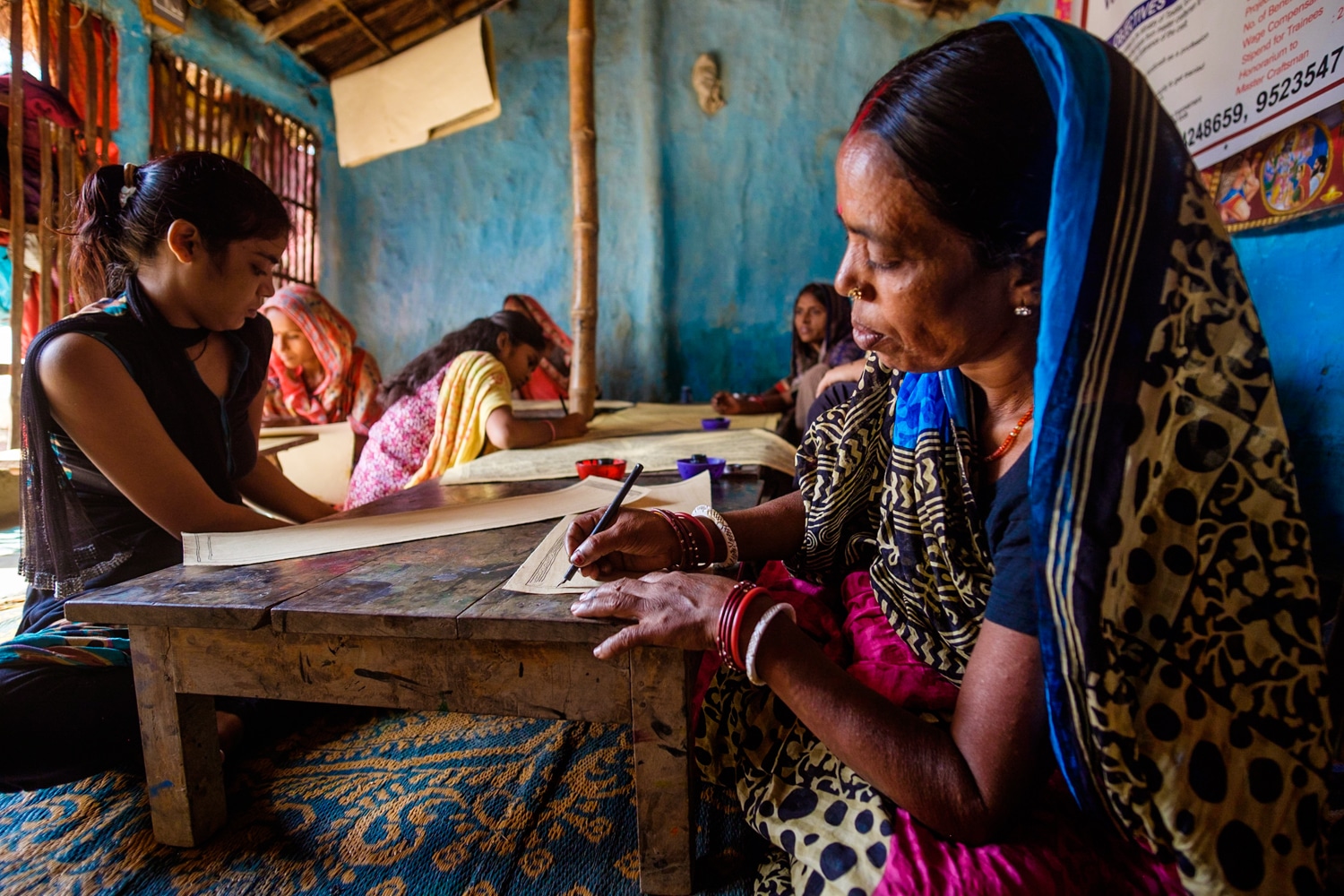
A version of this story originally appeared in the April 2018 Issue of National Geographic Traveller India Magazine.
Wonderful article. Thanks for enlightening us. 🙂
Thank you Hariom, some of the most wonderful stories are in places you don’t expect. 🙂
True!